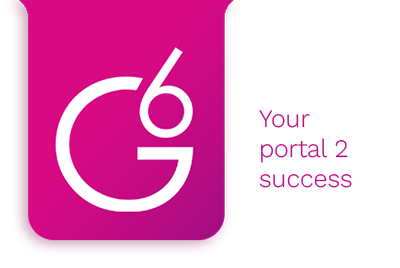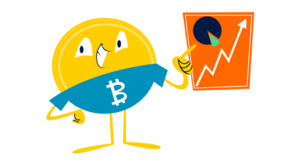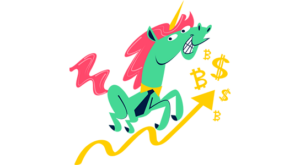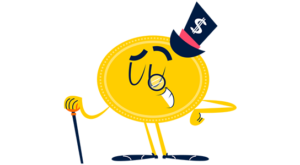Is your sales department having difficulty attracting your brand’s target audience? Do you know how to create a personalized shopping experience?
If you can relate to these questions, you’re in the right place! Small business owners everywhere struggle to form personalized customer connections because they don’t know about inbound sales!
Hi, my name is AJ. I started Small Business Bonfire (SBB) after selling my company for multiple seven figures!
I quickly learned the value of forming meaningful customer connections as my business grew, and eventually, I implemented an inbound sales methodology!
What do I mean by “inbound sales”? Keep reading to find out!
Key Takeaways
Inbound sales uses high-quality content, like social media, to attract potential buyers.
Strategies to attract inbound sales leads include SEO, SEM, social media, and email marketing.
Inbound sales strategies have a higher marketing ROI.
Inbound sales tactics are a more modern approach to selling products or services.
With this strategy, teams focus on providing clients with value before delivering their sales pitch.
What do I mean by providing customers with value?
With inbound sales, potential customers learn about your brand before your sales team contacts them.
For instance, these potential buyers can discover your business through the following outlets:
Content marketing Social media marketing Online advertisements Word-of-mouth referrals
After learning about your company, the prospect looks into your products or services closer to determine whether they need it.
Also, when sales reps observe a potential customer actively engaging with your brand, they will reach out and nurture this lead.
Put simply, the inbound sales process is more personalized than other strategies like outbound sales.
The inbound sales funnel consists of three stages, which include:
Attracting visitors (top of the funnel) Converting visitors (middle of the funnel) Closing deals (bottom of the funnel)
The top-of-the-funnel (TOFU) stage focuses on attracting potential customers to your brand.
Sales reps do this by raising awareness about your products or services!
Further, companies can achieve this through various methods, such as:
Targeted content marketingBlog postsEducational videos Social media activity
Also, the following things can significantly increase visibility and draw potential customers towards your brand:
Optimizing your company’s website for search enginesRunning online advertisements Leveraging word-of-mouth referrals
The middle of the funnel (MOFU) phase is about converting interested visitors into qualified leads!
Businesses should provide visitors with more detailed information about their products or services at this stage.
Typically, a sales team informs prospects through means such as:
Free trialsProduct or service demos Informative webinars
Lastly, the bottom-of-the-funnel (BOFU) stage is the crucial point where sales reps convert leads into customers.
The BOFU stage involves the following actions:
Nurturing the leads with personalized messagesAddressing specific concerns or queries Offering prospects tailored solutions
One of the most challenging aspects for small businesses utilizing inbound sales strategies is attracting potential buyers!
Fortunately, there are multiple ways inbound salespeople can find new leads, including the following:
SEOSEMSocial media marketing Email marketing Lead agents
Search engine optimization (SEO) is a strategy teams use to improve their website’s visibility on search engine results pages.
As a result, this drives organic traffic.
Also, SEO attracts inbound sales leads by enhancing the discoverability of your business.
Therefore, when potential customers search for keywords related to your products, your website appears among the top results!
Search engine marketing (SEM) is a digital inbound marketing strategy that increases a website’s visibility in search engine results pages through paid advertising.
Further, SEM attracts potential buyers by bidding on keywords, allowing your business to appear more prominently in search results!
As a result, SEM can increase the likelihood of attracting and engaging with high-intent visitors actively searching for solutions you offer.
Social media marketing is a powerful inbound sales strategy that leverages various social media platforms to do the following things:
Promote products or servicesEngage with consumers Build brand awareness
Social media marketing attracts inbound sales leads by creating and sharing engaging content that does the following things:
Resonates with potential customersIncites interaction Encourages prospects to learn more about your brand
Email marketing is a targeted digital communication strategy that uses emails to do the following things:
Promote products or servicesNurture relationships with potential customers Maintain contact with existing customers
Further, email marketing attracts potential buyers by delivering personalized content directly to their inboxes!
Lead magnets are strategic offers a business provides to prospects in exchange for their contact information.
These offers include things like:
Free ebooksWhitepapers Discount codes
As a result, these offers encourage prospects to engage with your inbound sales reps and move down the sales funnel!
Outbound sales strategies are a proactive approach where sales reps initiate contact with potential customers.
Outbound sales strategies typically involve the following acts:
Cold callingDirect mail Email campaigns
The purpose of each outbound sales tactic is to reach out to prospects who may not be aware of your business!
On top of that, outbound sales aim to spark interest in your products or services and persuade these potential buyers to make a purchase.
Although outbound sales can sometimes be intrusive, when executed correctly and targeted at the right audience, outbound selling can effectively generate leads and close deals.
There are similarities and differences between inbound and outbound sales.
For instance, some of the main differences between outbound and inbound selling include the following things:
The ways sales reps initiate contact The customer journey The strategies teams use to sell a product or service.
First, let’s look at the differences between outbound and inbound sales!
Initiation of Contact
In inbound sales, potential customers initiate contact by showing interest in your content or brand.
On the other hand, in outbound sales, the company initiates contact with prospects, typically through the following methods:
Cold callsDirect mail Email campaigns
Inbound and outbound sales tactics both require effort to find prospects, but the ways sales teams do so are different!
Customer Journey
The customer journey is another aspect that differs between outbound and inbound sales strategies.
For instance, inbound sales follow a pull strategy, attracting customers through valuable content and nurturing them through the sales funnel.
The inbound sales process is tailored to individual preferences and beliefs.
In comparison, outbound sales follow a push strategy, where sales reps reach out to prospects directly, trying to spark interest and close deals.
Methods Used
Lastly, the outbound and inbound selling strategies differ in sales representatives’ methods to attract potential buyers.
Inbound sales leverage digital channels to draw and convert leads, like:
SEOSEMSocial media Email marketing
In contrast, outbound sales primarily use traditional methods such as:
Cold callingDirect mail Broad-spectrum email campaigns
Now, let’s look at some similarities between inbound and outbound sales.
The two primary similarities include the following things:
The goal of each sales process The focus on customer engagement
Let’s dive into these similarities deeper!
Goal-Oriented
Both sales strategies aim to do the following things:
Attract potential customersGenerate well-qualified leads Close deals
Basically, the outbound and inbound sales processes serve the common objective of increasing sales and revenue for the company!
Customer Engagement
Regardless of the approach, both inbound and outbound sales require engaging with prospects at multiple touchpoints.
Be it through content marketing, email follow-up in inbound sales, or direct calls or emails in outbound sales, customer engagement is crucial!
Engaging with prospects throughout the buyer’s journey helps teams deliver a more personalized shopping experience.
Personalized shopping experiences are critical because they can lead to the following things:
More loyal customers Better customer satisfaction reviewsMore repeat customers Better word-of-mouth referrals
How beneficial is an inbound sales methodology?
As it turns out, there are several advantages to this type of sales strategy!
Some vital inbound sales statistics you need to know include the following things:
46% of marketers noted that inbound marketing resulted in a higher return on investment (ROI)57% of the sales process is completed for consumers before a business has a chance to interact with them93% of the business-to-business (B2B) buying processes start with an online search 77% of B2B buyers claimed they wouldn’t speak to a sales rep until they conducted their own product or service research 94% of B2B buyers will do research online before finalizing their purchase 59% of marketing teams said inbound marketing tactics generate more high-quality leads 47% of shoppers view three to five pieces of company content before speaking with a sales rep
As you can see, inbound sales have several benefits, especially since most consumers do online research before buying something.
Now, I’ll review the inbound sales journey!
The three stages of the inbound sales journey include:
Awareness of your product or service Consideration Decision
The awareness stage is the initial phase of the inbound sales journey, where potential customers become aware of your product or service.
Further, the awareness stage is where your targeted marketing efforts come into play.
For instance, these marketing techniques aim to educate and inform the audience about their problem and how your product or service can provide a solution!
During the consideration stage, potential customers have clearly defined their problem or opportunity.
Now, they’re committed to researching and understanding all the available approaches or methods to solve their problem, which includes your product or service!
The decision stage is the final phase of the inbound sales journey.
Prospective customers, having considered all the options, are now ready to make a purchasing decision.
Therefore, your emphasis should be on differentiating your product or service, demonstrating its unique value and benefits over the alternatives!
The inbound sales process has six steps, including the following:
Using marketing techniques to attract leads Capturing leads Lead qualification Product or service demos Closing the dealFollowing up with the customer
Inbound marketing techniques are strategies designed to attract potential customers to your products or services by delivering valuable and relevant content.
Examples of these techniques include the following:
Search engine optimization (SEO)Content marketing through blogs or eBooksSocial media marketing Email marketing campaigns
Companies capture leads by offering valuable content or services in exchange for the potential customer’s contact information.
Typically, companies capture lead information through the following tactics:
Online formsSubscriptions to newslettersFree trials Interactive content
Essentially, the goal is to invite user engagement and capture the potential customers’ contact information.
The customer discovery call and lead qualification stage in the inbound sales process involves a preliminary interaction with the potential customer.
Further, the goal here is to gain insights into a lead’s needs and evaluate their suitability for your products or services.
Teams can learn more about leads and qualify them using a discovery call.
During this call, the sales rep engages in a conversation with the lead to understand the following things:
Budget Authority Need Timeline
Here’s a little more on the BANT qualification framework!
First, determine whether the lead can afford your products or services.
After all, what good is it to chase a lead who can’t even afford what you’re selling?
Next, the inbound salesperson must see if the person they’re speaking to has the authority to purchase products or services.
After that, see if the lead has a problem or challenge that your company’s products or services can solve!
Lastly, determine the lead’s timeline.
Are they hoping to purchase something as soon as possible or within a few months?
Product demonstrations are instrumental in showcasing your product or service’s practical applications and benefits.
Also, demos provide an opportunity to prove the effectiveness of your offering and allow customers to visualize how it fits within their particular context!
Closing the sale is the step where the sales representative finalizes the deal, turning the prospective customer into an actual customer!
Following up with customers is crucial because it helps do the following things:
Build lasting relationshipsFoster customer loyalty Encourage repeat business
On top of that, following up allows businesses to:
Gather feedbackAssess customer satisfactionAddress any issues or concerns
Below, I’ve listed four ways you can follow up with leads to ensure inbound sales success!
Phone calls are a more personal way to follow up with buyers, so they’re great for larger purchases.
Even if the customer doesn’t answer, leaving a message is beneficial!
Social media outlets are quick ways to follow up with buyers.
Therefore, using social media to follow up is beneficial when connecting with several people.
Email is another great way to connect with people after the buying process is over because you can automate your messages.
Automation ensures you get the best of both worlds: connecting with customers and saving time!
Lastly, there are in-person visits.
As you can imagine, in-person visits are perfect for building long-term relationships with buyers!
The final thing I’ll go over is an inbound sales example!
In this example, let’s consider a company called Bounce that sells high-end basketball shoes.
Step 1: Create a Buyer Persona
Bounce would analyze customer data to create a buyer persona, observing patterns and commonalities in the following things:
DemographicsBehavior Purchasing habits
Bounce will compile this information to form a detailed profile of their ideal customer, such as:
A competitive basketball playerAged between 15-28Someone who values performance and design in their footwearSomeone who keeps up with the latest trends in sportswear
Step 2: Develop Valuable Content (Blog, White Papers, Lead magnets)
By developing valuable content such as blogs, whitepapers, and lead magnets, Bounce can engage its target audience more effectively.
As a result, the company fosters brand loyalty and turns prospects into customers.
On top of that, providing high-quality content can also boost Bounce’s visibility on search engines, which leads to the following things:
Attracting more potential customers Positioning the brand as a credibleShows the brand is a trusted authority in the high-end basketball shoe market.
Step 3: Use Social Media to Engage with Potential Customers
Bounce could use social media platforms like Instagram or Twitter to share engaging content such as:
Behind-the-scenes looks at their product creation processUpdates on new shoe releases Customer testimonials
Also, Bounce can use social media to encourage customer loyalty and brand recognition.
For instance, some tactics Bounce could use include the following:
Actively responding to comments and messagesHosting occasional live Q&A sessions Creating discussions around the sport and footwear trends
Step 4: Utilize Email Marketing and Lead Nurturing Techniques
Bounce could harness the power of email marketing by sending the following messages:
Personalized product recommendationsExclusive discounts Insightful content
Also, they can further tailor their messaging and offers by monitoring customer interactions with these emails (click-through rates, purchases, etc.).
As a result, Bounce facilitates a lead’s journey from initial interest to eventual purchase.
Step 5: Use a CRM to Mark Leads as SQL or MQL
Bounce uses CRM (customer relationship management) software to label leads as SQL (Sales Qualified lead) or MQL (Marketing Qualified lead) based on their interaction and engagement with the brand.
RMC software tracks and analyzes customer behavior, such as:
Email open ratesWebsite visits Product Inquiries
As a result, the company can differentiate between leads who are ready to purchase (SQL) and those who are still in the early stages of the sales funnel but have shown interest in the product (MQL).
Step 6: Convert Traffic into MQL Leads into SQL Leads
Bounce can convert website traffic into MQLs by implementing strategic lead-capturing techniques such as:
Offering valuable content in exchange for contact information Using sophisticated tracking software to identify repeat visitors and gauge their interests
Once these MQLs display behavior indicating readiness to purchase, they can be upgraded to SQLs, ready for the sales team to close the deal!
Step 7: Customer Discovery
In the customer discovery phase, Bounce focuses on understanding customers’ needs, preferences, and pain points.
The company can learn more about their target audience through the following methods:
Conducting market researchInterviewing existing customers Analyzing customer data and feedback
In the end, customer discovery helps Bounce tailor their products and marketing strategies to match the target audience’s expectations.
Step 8: Presentation or Pitch
In the presentation phase, Bounce showcases its high-end basketball shoes, emphasizing the following things:
Standout featuresPerformance benefits Design aesthetics that cater specifically to their target customer’s desires.
This phase allows the brand to demonstrate its unique value proposition and convince the customer of the product’s worth.
Step 9: Close the Sale or Follow Up
At this stage, Bounce’s sales team closes the sale through direct communication channels or digitally through an automated checkout process on the website.
Suppose the potential customer needs more time or information to make a decision.
In that case, the team will follow up with them using the most appropriate communication mode, such as:
EmailPhone callSocial mediaIn-person visit
Step 10: Continuously Analyze and Optimize Your Inbound Sales Strategy
Bounce will continuously analyze its inbound sales strategy using analytics tools to measure key performance indicators, such as:
Lead conversion ratesCustomer engagement ROI on marketing initiatives
Based on these insights, they will optimize the strategy by refining the following things:
ContentTargeting techniquesCustomer interaction channels Lead nurturing processes
There you have it! Everything a small business owner must know about inbound sales!
Remember, inbound sales are beneficial because they have a higher marketing ROI and allow you to engage with more people simultaneously.
What inbound sales methods will your team try? Let us know in the comments section!
The post Inbound Sales: A Small Business Guide appeared first on Small Business Bonfire.
—
Blog powered by G6
Disclaimer! A guest author has made this post. G6 has not checked the post. its content and attachments and under no circumstances will G6 be held responsible or liable in any way for any claims, damages, losses, expenses, costs or liabilities whatsoever (including, without limitation, any direct or indirect damages for loss of profits, business interruption or loss of information) resulting or arising directly or indirectly from your use of or inability to use this website or any websites linked to it, or from your reliance on the information and material on this website, even if the G6 has been advised of the possibility of such damages in advance.
For any inquiries, please contact [email protected]




